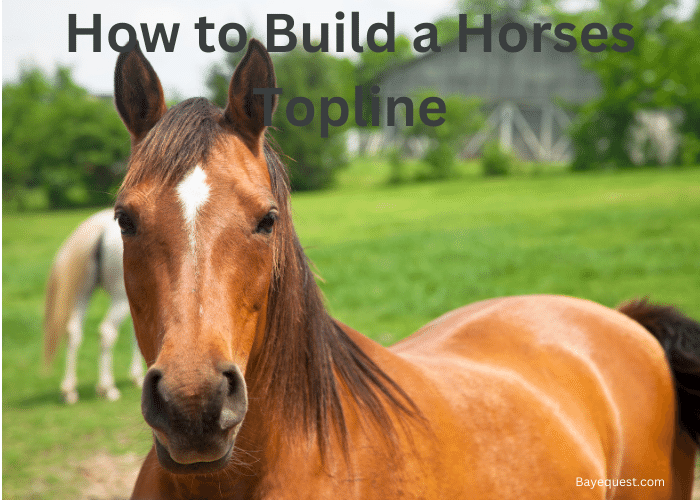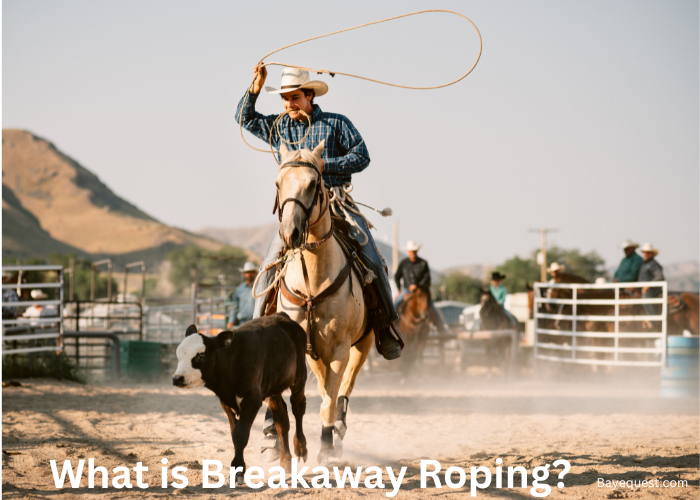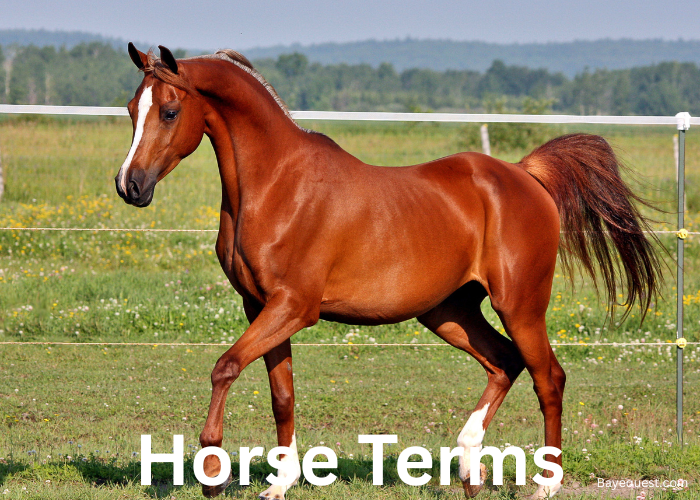Did you know that a strong topline can improve a horse’s performance by up to 30%? With over a decade of experience in equine care, I’ve seen firsthand how crucial a well-developed topline is.
A weak topline affects your horse’s appearance, health, and agility. Many horse owners struggle with this issue, but you don’t have to.
In this article, you’ll discover straightforward methods on how to build a horses topline. Keep reading to start seeing noticeable improvements.
What is Topline in Horses?
When we talk about a horse’s topline, think of it as the horse’s backbone of beauty and strength. It’s a line that starts at the base of the neck, runs along the spine, and ends at the tail.
This line isn’t just for looks. It’s a sign of good health and proper care.
Now, let’s break it down a bit. Imagine three key muscles like the main characters in this story.
First, we have the Thoracic Trapezius. This muscle is like a strong, supportive friend that lies over the horse’s shoulder and neck, helping to lift and extend the neck and shoulders.
Next up is the Longissimus Dorsi. This one’s the hero of our story, the longest muscle in the horse’s back. It runs from the neck to the tail, playing a huge role in how the horse moves, bends and carries itself. Think of it as the backbone of the topline, keeping the horse’s back strong and flexible.
Lastly, there’s the Latissimus Dorsi, a bit of a behind-the-scenes worker. It’s located on the side of the horse’s back, stretching from the spine to the hindquarters. This horse muscle is all about power, helping to pull the leg backward and propel the horse forward.
Together, these muscles form the equine topline. Keeping this trio strong and healthy means a happier, more agile horse, ready to take on whatever tasks or adventures lie ahead.
How to Recognize the Top Line of a Horse
Recognizing the horse top line is like learning to read the story of its health and fitness without needing a single word. Let’s simplify how to see it, step by step as if you were learning to appreciate a beautiful landscape.
First, take a step back and look at your horse from the side. Imagine a line starting from the base of the neck, to the shoulders, to the withers, then stretching along the back, and finally, towards the tail.
This line shouldn’t be a roller coaster with sharp dips and peaks. It should have gentle curves, showing strength and balance.
Now, focus on three landmarks along this line, like checkpoints on a map:
- The neck. It should blend smoothly into the shoulders. A well-defined horse topline will show a neck that’s strong and muscle at the top, not bottom-heavy.
- The withers and back. Look for a smooth, slightly elevated area at the withers, leading into a back that’s level or slightly sloped, but not sagging or swayed. This shows that the muscles are holding the spine in a natural, healthy curve.
- The hindquarters. The line should flow into a rounded, muscular hindquarters, not dropping off sharply or appearing flat. This area powers your horse’s movement, so muscle here is a good sign.
A healthy topline looks like a smooth, well-maintained road that’s ready for any journey. It tells you that your horse is not just surviving but thriving.
Signs of a Poor Horse Topline
Dips and hollows. When you see dips along the neck, behind the withers, or before the hindquarters, that’s a sign that something’s missing.
Prominent spine. If the spine sticks out, making it easy to feel or see, it’s as though the soil has eroded, leaving the roots of a plant exposed. This isn’t just uncomfortable to look at; it’s uncomfortable for the horse, too.
Lack of muscle. When the muscles along this line seem to have faded away, leaving the area flat or sunken.
Read also: Horse Chiropractic Adjustment.
Causes of a Poor Topline on Horse
Inadequate nutrition. Horses require a diet rich in quality proteins and essential amino acids to build and maintain muscle. A diet lacking in these key nutrients can lead to a poor topline.
Lack of proper exercise. Exercise for a horse is like sunlight for a garden. Without the right exercises to engage and strengthen the muscles along the topline, they can weaken and deteriorate.
Age and health issues. Sometimes, despite our best efforts, natural factors come into play. Older horses or those with health issues may struggle to maintain a strong topline. It’s like a garden facing harsh weather; some factors are beyond our control, but we can still do our best to protect and nurture it.
Improper saddle fit. Imagine planting a tree in a too-small pot; it’s restricted and can’t grow properly. Similarly, a poorly fitting saddle can hinder a horse’s movement and muscle development, impacting the topline.
Why is a Strong Topline on a Horse Important?
A strong topline in a horse is like the foundation of a house. It supports everything else. Without it, a horse can’t perform at its best, whether that’s in the field, on the track, or under the saddle.
Here’s why a strong topline is so crucial:
Balance and stability. Imagine a dancer. Balance is key to every move they make. For a horse, a strong topline provides this balance. It enables enabling them to move gracefully and confidently.
Health and comfort. A strong topline helps a horse feel its best. It supports the spine, reducing the risk of back pain and injuries.
Performance and athleticism. A horse with a well-developed topline is like an athlete in peak condition. They have the strength and endurance to perform at higher levels, jump more effectively, and run faster.
Breathing and health. Just like a strong core helps us breathe better and stand taller, a strong topline aids in a horse’s breathing and overall circulation. This not only impacts their stamina but also their health and longevity.
Aesthetic appeal. Beyond the practical benefits, a strong topline has an aesthetic appeal. It signifies health and vitality, making the horse look majestic and powerful. It’s the visual proof of a well-cared-for horse, reflecting the care and effort put into its training and maintenance.
How to Build a Horses Topline
Building a horse’s topline is a journey, not a sprint. It’s about fostering strength, flexibility, and balance through a combination of good nutrition, regular exercise, and proper care.
Here’s how you can start this journey, focusing on creating a harmonious blend of elements that contribute to a strong and healthy topline.
1. Fix underlying issues
Let’s talk about fixing underlying health issues that can affect a horse’s topline.
Pituitary Pars Intermedia Dysfunction (PPID)
You know the pituitary gland? It’s a small but mighty gland found in the brain. In older horses, part of this gland, known as the pars intermedia, gets a bit overzealous.
It starts working overtime, producing too many hormones. This condition, PPID, can lead to a bunch of issues like a shaggy coat that doesn’t shed, muscle loss including in the top line, and increased thirst and urination.
Getting this under control often involves medication to turn it back to normal, helping the horse regain its balance and muscle tone.
Polysaccharide Storage Myopathy (PSSM)
Next up, we’ve got PSSM, a condition where the horse’s muscles store an abnormal amount of sugar in the form of glycogen. It’s like packing a suitcase so full that it won’t close.
The muscles just can’t use all that energy efficiently, leading to muscle stiffness, pain, and reluctance to move. This impacts the topline because those muscles aren’t working or developing correctly.
Managing PSSM involves a special diet low in sugars and starches.
Overriding Dorsal Spinous Processes/ Kissing spines
This is when the spinous processes, the pointy parts of the vertebrae along the back, get too close for comfort and start to touch or overlap.
It’s uncomfortable, and it can cause pain, leading to a poor topline because the horse might avoid moving in ways that hurt.
Treatment can vary from exercises that encourage the horse to stretch and use its back muscles more effectively, to medication for pain management, and in some cases, surgery to give those spinous processes a bit more room.
2. Evaluate saddle fit
Evaluating saddle fit is crucial for your horse’s comfort, performance, and overall health. An ill-fitting saddle can lead to pain, behavioral issues, and long-term physical damage.
Here’s a straightforward approach to checking if your saddle fits properly.
Step 1: Visual inspection without a pad
Place the saddle on your horse’s back without a saddle pad. It should sit squarely in the middle of the horse’s back, not too far forward or back.
There should be enough space between the saddle and the horse’s withers — typically, you want about two to three fingers’ width. This ensures the saddle isn’t pressing down on the withers.
The underside of the saddle should make even contact with the horse’s back along its length. No gaps or pressure points.
Step 2: Check under saddle
Lightly girth up the saddle and check the fit again. The girth should be tight enough to keep the saddle in place but not so tight it causes discomfort.
The saddle should sit level on the horse’s back. If it tips forward or back, it may cause pressure points or slide during riding.
Step 3: With rider’s weight
With a rider in the saddle, check again for wither clearance. Weight can compress the saddle, reducing clearance.
Have someone watch as you ride lightly in a controlled area. They should look for any shifting or rolling of the saddle, indicating a poor fit.
Step 4: Movement check
Perform light-riding exercises. The saddle should remain stable and not shift or bounce.
Pay attention to your horse’s behavior. Signs of discomfort can include pinning ears, swishing tail, or reluctance to move forward.
Step 5: Post-ride inspection
After removing the saddle, look for an even sweat pattern. Uneven sweating can indicate pressure points.
Any area where the hair is rubbed away or looks ruffled can be a sign of poor saddle fit.
Read also: How to measure a horse’s height.
3. Include amino acids, proteins, and energy foods in the diet
Including proteins and energy-rich foods in a horse’s diet improves their overall health and is particularly important when working on building or maintaining a strong topline.
Proteins, made up of amino acids, are the building blocks of muscle. Let’s break down why amino acids and protein sources are key, and how to incorporate them into your horse’s diet.
Amino acids
Amino acids are the individual components of proteins. Horses require certain amino acids, known as essential amino acids, from their diet because their bodies can’t make them in sufficient quantities. These include:
- Lysine. Often considered the most important amino acid for horses, lysine is crucial for muscle development and repair. It’s a limiting amino acid, meaning if it’s not present in enough quantities, it can limit the horse’s ability to use other amino acids.
- Methionine and threonine. These are also important for muscle health and development, as well as for the production of hair, hooves, and connective tissue.
Protein sources
To ensure your horse gets enough of these essential amino acids, you’ll want to include high-quality protein sources in their diet. Here are some good options:
- Soybean meal. High in lysine, soybean meal is a common ingredient in horse feeds that’s excellent for muscle development.
- Alfalfa. This legume hay is higher in protein and calcium than grass hays, making it a valuable addition for horses needing more protein.
- Linseed (Flaxseed). While not as high in protein as soybean meal or alfalfa, linseed is a good source of amino acids and also provides omega-3 fatty acids, which can support overall health.
- Whey protein. Occasionally used in horse supplements, whey protein is a digestible protein source, rich in essential amino acids.
Energy foods
Energy in a horse’s diet usually comes from carbohydrates and fats. For a horse in training or one that needs to build muscle, you’ll want to ensure they have enough energy for their workouts.
Here are some energy food options:
- Controlled starch feeds. Look for commercial feeds designed to provide energy through highly digestible fiber and fats, rather than through high starch and sugar.
- Beet pulp. A great source of digestible fiber, beet pulp can provide energy without the quick sugar rush of grains.
- Oils. Adding a little oil to your horse’s feed can provide a dense source of calories, ideal for horses needing extra energy for muscle building.
4. Add vitamins and minerals
Vitamins: These are organic compounds your horse needs in small amounts. They’re crucial for energy conversion, bone health, and more.
Key vitamins include:
- Vitamin A for vision, immune function, and skin health.
- Vitamin D for calcium absorption and bone health.
- Vitamin E for muscle function and immune support.
- B Vitamins for energy metabolism and red blood cell formation.
Minerals: These inorganic elements also play vital roles in your horse’s body. Important minerals include:
- Calcium and Phosphorus for bone strength.
- Magnesium for muscle function and enzyme activation.
- Sodium and Chloride (salt) for fluid balance and nerve transmission.
- Zinc, Copper, and Selenium for skin health, and antioxidant functions.
5. Support digestive health
Supporting your horse’s digestive health is akin to nurturing the roots of a tree. Start with high-quality forage, as a fiber-rich diet is foundational for good digestive function.
Consider adding probiotics to encourage a healthy balance of gut bacteria. Don’t overlook the importance of clean, fresh water and free-choice minerals to aid digestion and overall health.
Also, regular, small meals mimic a horse’s natural grazing behavior, preventing the stomach from becoming too empty or too full. By keeping these practices in harmony, you’re not just feeding a horse; you’re cultivating a vibrant, healthy ecosystem within.
6. Work on exercises
Working on exercises that enhance your horse’s topline is like crafting a bespoke fitness routine tailored to their needs. Each exercise targets different muscle groups, promoting strength, flexibility, and balance.
Let’s explore some exercises for building topline in horses:
Spiral in and out on the lunge
Think of spiraling in and out as a dance move on a lunge line, where your horse gradually decreases and increases the circle’s size. This exercise encourages your horse to balance and engage their core muscles.
It’s a gentle way to start the conversation between you and your horse about moving and holding their body in a way that promotes muscle development.
Step under with the hindleg
Asking your horse to step under with their hindleg is like instructing a dancer to take a deep, stretching step. This movement encourages the hindquarters to engage and the back muscles to lift.
It’s particularly effective in encouraging the horse to use the powerhouse of their body, their hind end, efficiently.
Carrot stretches
Carrot stretches are the yoga of the horse world. By using a carrot or treat, guide your horse to stretch their neck and body in various directions.
These stretches promote flexibility, encourage range of motion, and help release tension in the muscles along the topline.
Work on a hill
Hill work is the equivalent of hitting the gym for leg day. Walking or trotting up and down hills naturally encourages your horse to use their hind end more and to lift their back, building muscle and power in the topline.
It’s a straightforward yet highly effective way to build strength and endurance.
Transitions under saddle
Transitions under saddle — moving between gaits or within a gait — are like interval training. Each transition asks your horse to rebalance, engage their core, and use their muscles thoughtfully.
This not only improves muscle tone and responsiveness but also enhances the horse’s ability to move.
Cavalettis or ground poles
Navigating cavalettis or ground poles is akin to running an obstacle course. It requires precision, agility, and the engagement of various muscle groups.
This exercise encourages the horse to lift their feet and back, engaging the topline muscles as they navigate over the poles. It’s a fun way to add variety to your routine while focusing on building strength and coordination.
7. Train the brain
Training the brain is about teaching your horse to think, not just react. Imagine you’re teaching a young kid to solve puzzles, not by forcing, but by guiding and making it a fun game. It’s the same with horses.
When we train their brains, we’re building trust, encouraging curiosity, and boosting their confidence. Start with simple tasks that require them to make choices, like navigating around obstacles or choosing to touch a target for a reward.
Mix up your routine to keep their mind engaged. Just like us, horses get bored doing the same old thing. Introduce new objects or change the training environment regularly. This keeps their minds active, asking questions, and looking to you for guidance.
Patience is your best friend here. Think of it as planting a seed. You won’t see the tree tomorrow, but with consistent care, it’ll grow strong.
Celebrate the small victories. Every time your horse makes a good choice or shows curiosity, that’s a win. These moments build up, creating a horse that’s not only physically capable but mentally sharp and willing.
Remember, a calm and focused horse is the goal. Pressure and release can be useful tools, but the real magic happens in those quiet moments when your horse is trying to figure out what you’re asking. That’s when the brain is truly working, making connections that last a lifetime.
In the end, training the brain is about more than obedience. It’s about building a partnership based on mutual respect and understanding. It’s a journey worth taking, leading to a relationship where both you and your horse are always eager to learn and grow together.
8. Use properly fitting equipment
Using properly fitting equipment for your horse is like wearing a tailor-made suit. When your horse is equipped with gear that fits just right, it can make a world of difference in their performance and well-being.
Start with the saddle, the cornerstone of your riding equipment. A well-fitting saddle allows your horse to move freely, without restriction or discomfort. (Related read: How much does a saddle weigh?)
It should sit evenly on their back, with enough clearance at the withers and no pinching on the sides. Think of it as a comfortable pair of shoes; you hardly notice it’s there, but it supports you with every step.
Don’t forget the bridle and bit. A bridle that’s too tight or a bit that’s the wrong size or style can be distracting or even painful for your horse. The bit should rest comfortably in their mouth, allowing clear, pain-free communication between you two.
Consider other gear like girths, halters, and boots. Each piece should fit snugly but not too tight, offering protection without causing rubs or irritation. It’s like choosing the right backpack for a long hike; it needs to fit well enough to carry what you need without weighing you down or chafing.
Remember, every horse is unique, like people with different body shapes and sizes. What works for one might not work for another. Regularly check the fit of your equipment, especially as your horse grows, changes shape, or their workload varies. Adjustments might be needed to keep that perfect fit.
In the end, using properly fitting equipment is a sign of respect and care for your horse.
Also, check out: Best Exercises for Horseback Riders.
How Long Does it Take to Improve the Topline of Horse?
Improving the top line on a horse is a bit like gardening; it requires patience, consistent effort, and the right conditions to see growth.
The timeline for seeing noticeable improvements in a horse’s topline can vary widely depending on several factors including the horse’s starting condition, age, health status, diet, and the consistency and appropriateness of the exercise regimen.
Interesting read: Why do horses roll?
Conclusion
Improving a horse’s topline is an art that marries patience, knowledge, and consistency. It’s a strong topline that signifies health, strength, and harmony in movement.
From optimizing nutrition with essential proteins and amino acids to tailoring exercise regimes that encourage muscle development, every step taken is a step towards enhancing your horse’s well-being.
While the journey might span from a few months to a year, the transformation process itself strengthens the bond between horse and rider.
Embrace the journey, adjust strategies as needed, and celebrate the milestones. Ultimately, the reward is a happy, healthy horse, poised with strength and grace.
Now, check out our article on horse tail without hair to uncover the causes behind thinning tails, learn practical tips for regrowth, and ensure your horse’s tail stays full, healthy, and strong.








